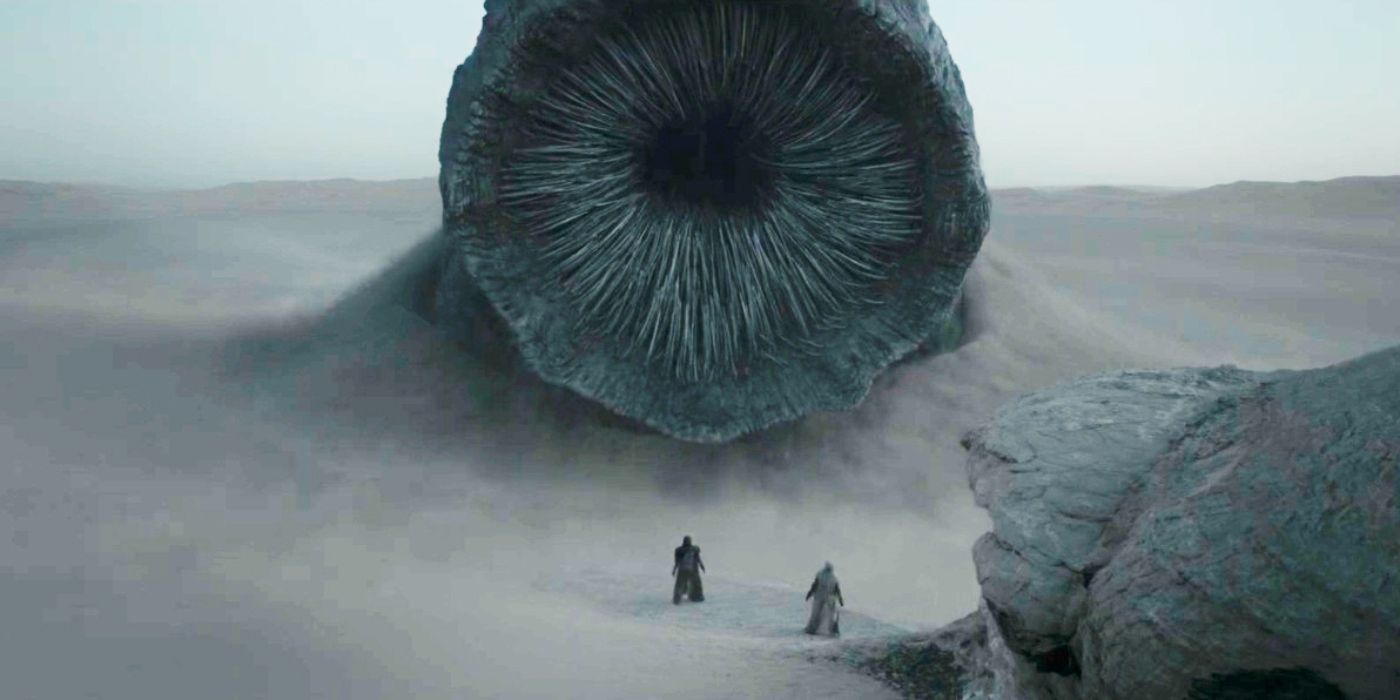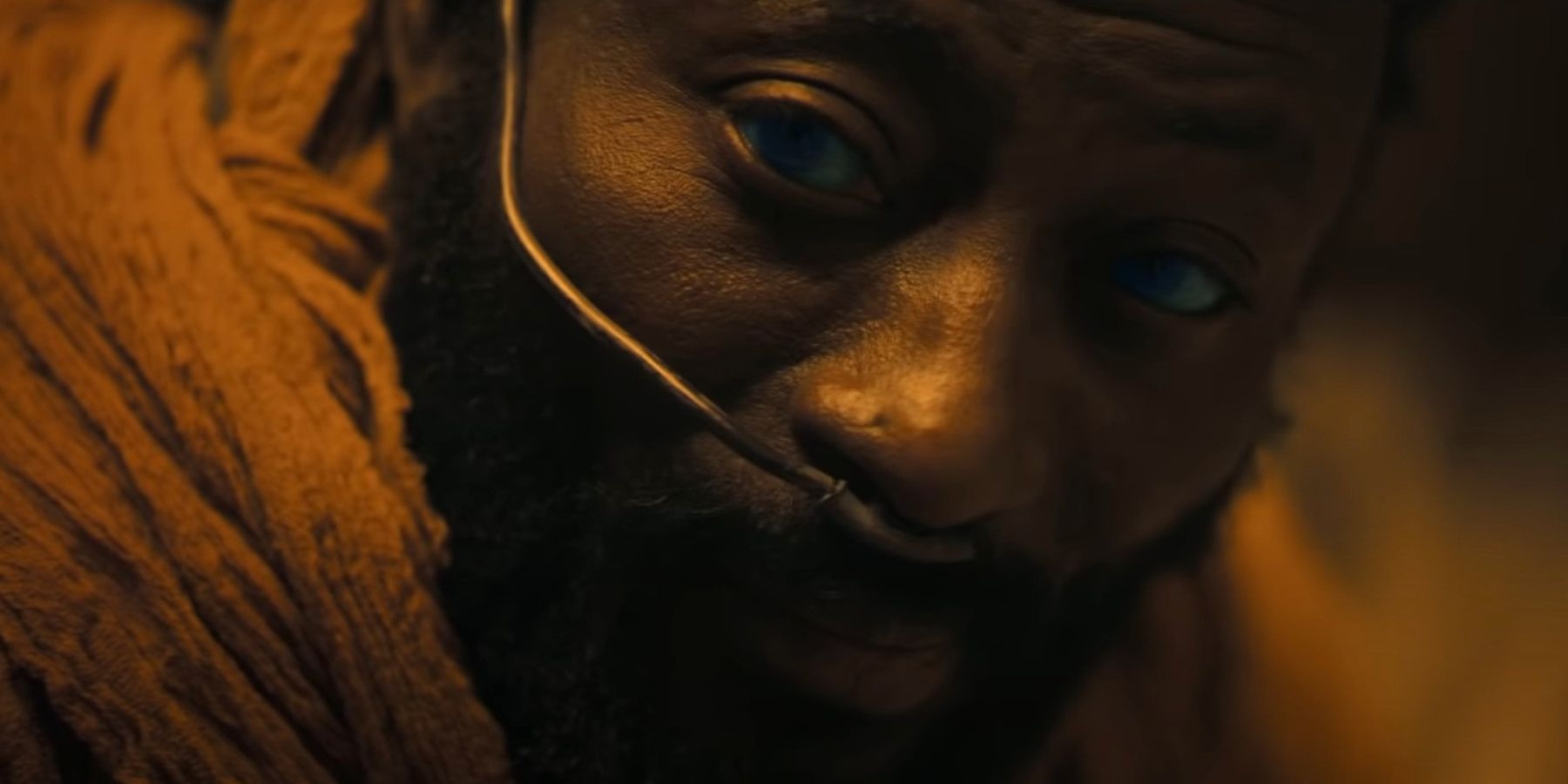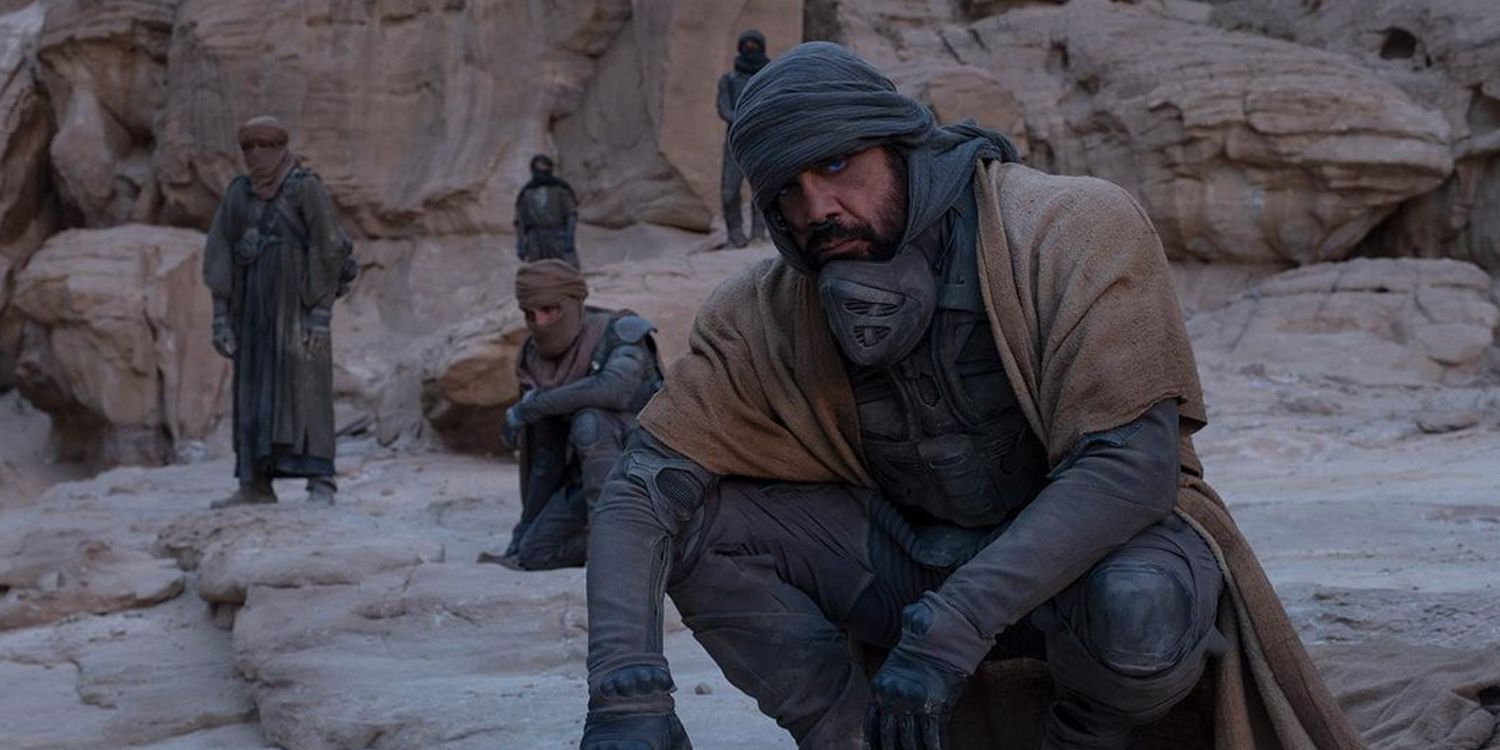The story of Dune cannot be told without the great sandworms that dominate its thematic and literal landscape. Frank Herbert's novel, published in 1965, has spawned more than a dozen books, a handful of video games, comics, graphic novels, a triad of limited series television shows, one of which is currently in development, and three films separated by more than three decades. At the heart of the narrative spanning this multimedia empire are the majestic worms of the desert and the humans who share their world.
The Fremen are a warrior society that has managed to survive the sun-scorched surface of Arrakis for thousands of generations. They have fostered a brutal homeostasis with their arid environment embodied in innovating water reclamation suits and harvesting hydration from their dead. The sandworms are vital to the precarious ecosystem as both an apex predator and the benefactor of priceless resources. As such, the great worms are inextricably interwoven into Fremen culture.
The Fremen Call Sandworms By a Different Name
Ranging in size from the little makers of a few meters to the grand makers of the deep desert that can surpass 400 meters in length, the Fremen consider the worms, or Shai-Hulud, as much more than a symbiotic species. As a life form, Shai-Hulud only succumbs to death through territorial combat with one of its kind or when poisoned by water, which is anathema to them. As such Shai-Hulud are nigh immortal, giving way to various interchangeable translations like "Old Man of the Desert," "Old Father Eternity," and "Grandfather of the Desert." The Shai-Hulud name itself is also malleable within certain contexts.
The Fremen have always been aware that the spice melange, the most valuable crop in the galaxy, is connected to Shai-Hulud's life cycle. The Harkonnens, and the Emperor by proxy, have abused the Fremen to mine the spice for many years, positioning the Fremen as defacto protectors of the universe's only truly unique resource. This has created a fusion of mystical and spiritual influences upon the collective Fremen consciousness that expresses itself in a variety of ways.
The living worm is the embodiment of a great god worm, also known as Shai-Hulud. This manifestation of Shai-Hulud reverberates throughout Fremen identity in a much more potent way than the merely physical threat of a worm passing or the cultivation of spice for interplanetary mercantile interests.
Sandworms Play a Significant Role in Fremen Culture
On a day-to-day basis, the Fremen beseech Shai-Hulud to show them favor as they struggle to find enough water and shade to survive the desolate dunes. Shai-Hulud sits as an arbiter of fate, credited with designing the faces of the moon. When a warrior meets a good death, usually by falling in combat to a superior foe or force, it is to the domain of Shai-Hulud that a fledgling spirit finds eternal rest. When someone takes their own life, it is whispered that Shai-Hulud coaxed them toward their demise. When oaths are sworn, they are voiced in the name of Shai-Hulud. Their material form is also venerated and central to many hallowed practices.
During their most sacred ceremonies, it is Shai-Hulud who presides over the rites in absentia. These liminal experiences are facilitated by the Water of Life, derived from a mixture of water and sandworm larvae excretions. A trained priestess then internally alchemizes this poison into a hallucinogenic elixir, serving as potent holy water with very real access to visions and insight. The crysknife, a glittering razor shard of Shai-Hulud's fangs, is an honored weapon with a host of rituals prescribed for its maintenance and use.
Shai-Hulud is the cornerstone of Arrakeen theology, biology, ecology and cosmology. Herbert intended for them to serve the role of dragons in medieval Anglo literature with their fearsome invincibility, but he was also influenced by Eastern traditions that held wyrms as seers and godlings. The Fremen demonstrate their devotion in the naming of things and none so fully as old father eternity.



